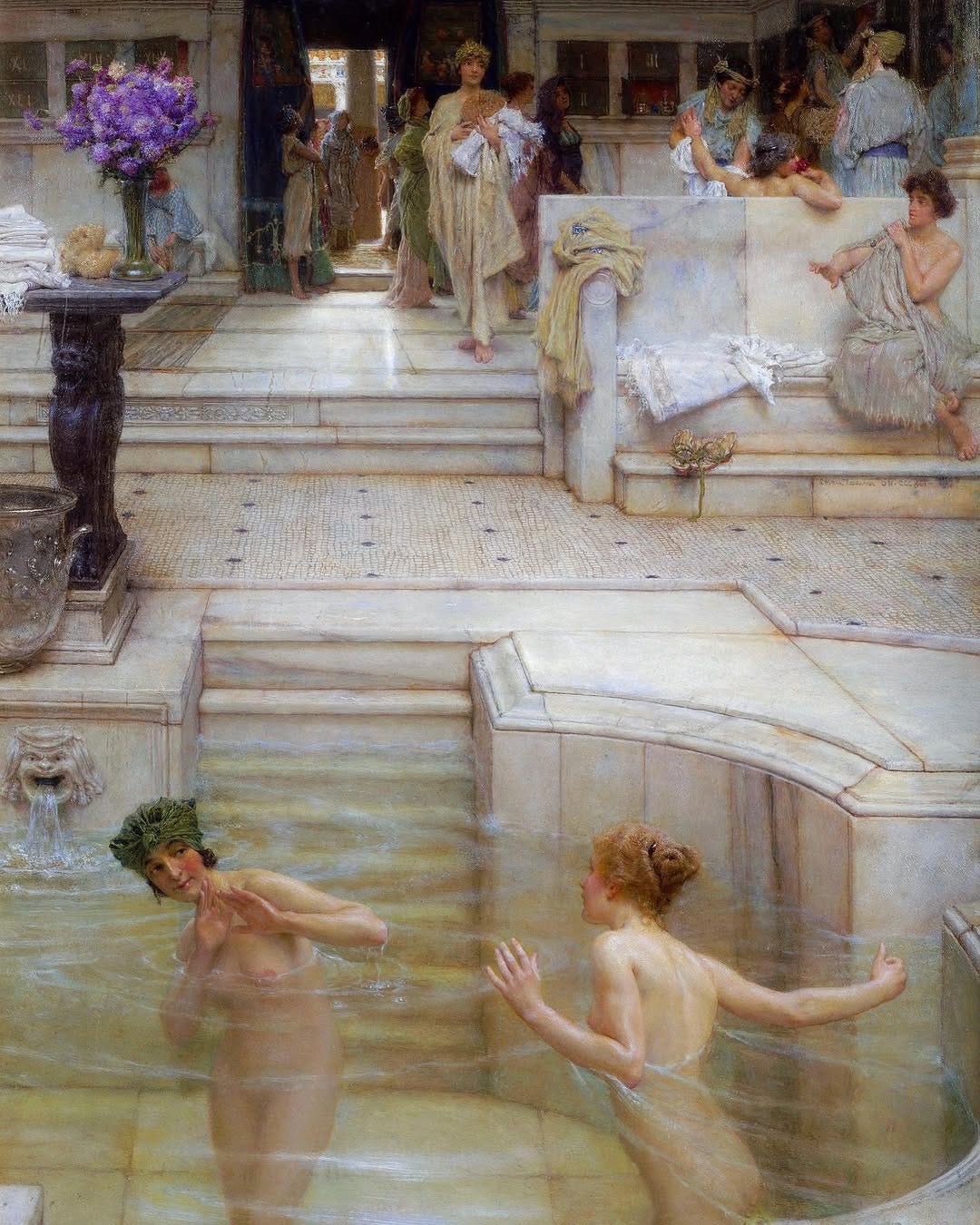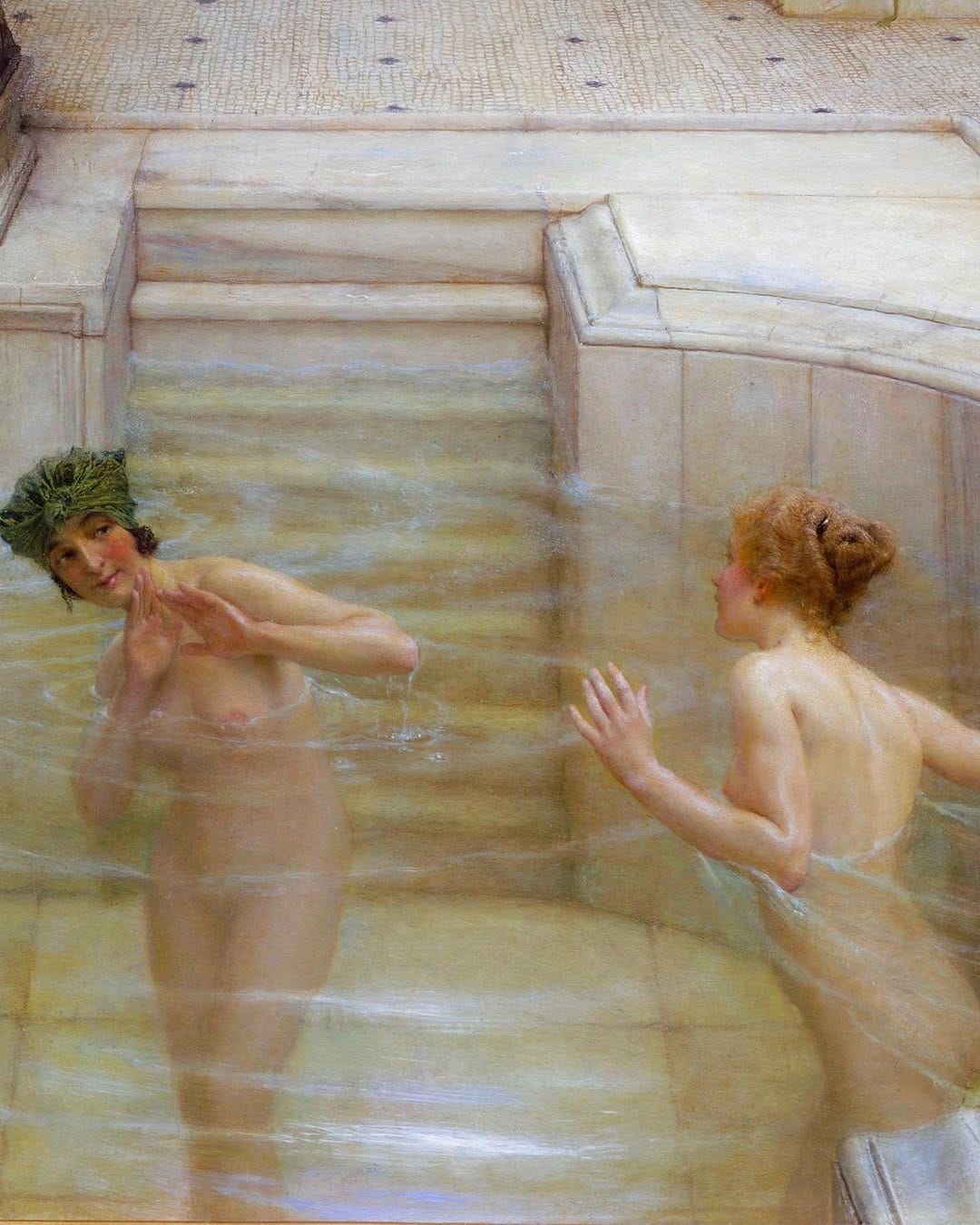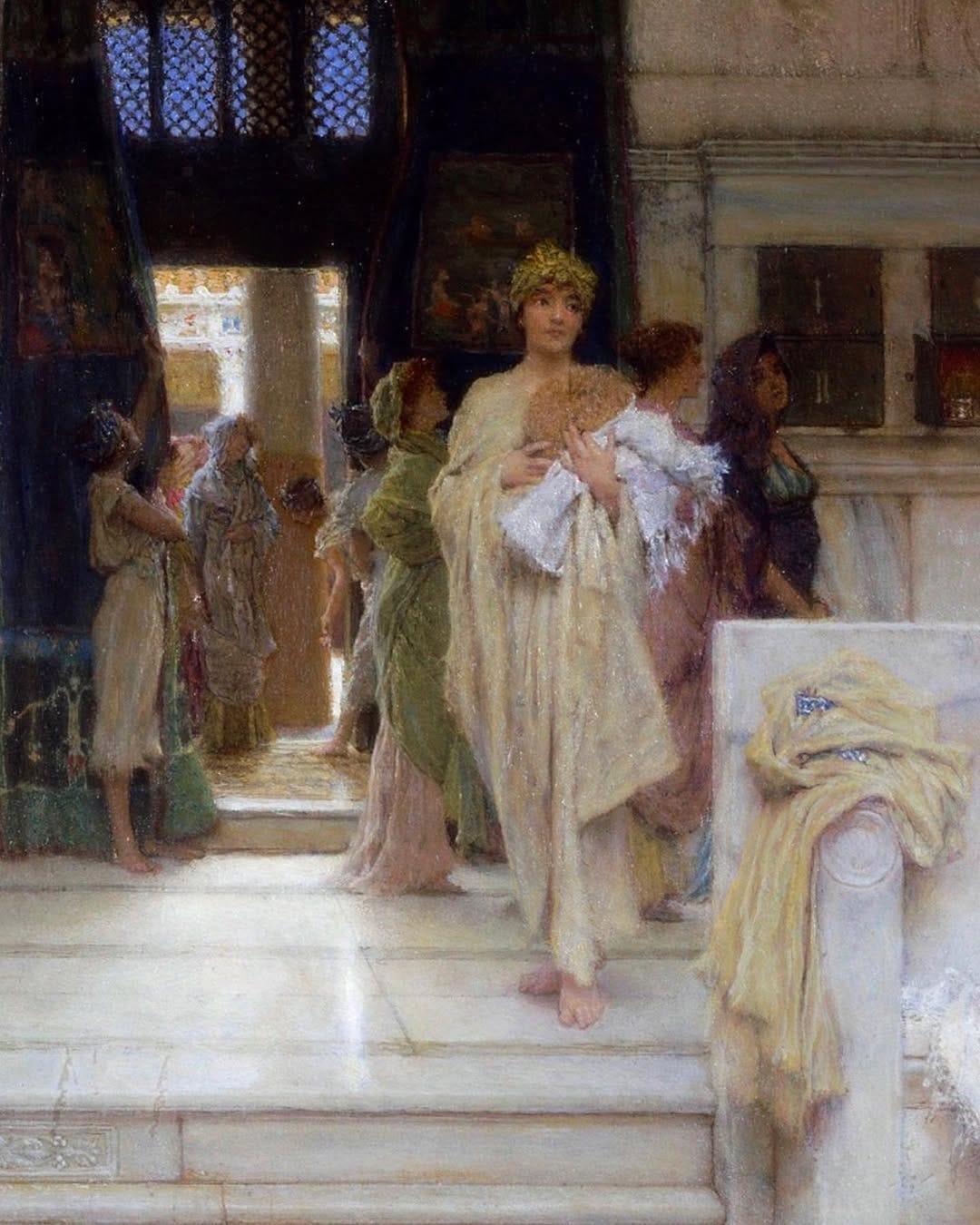This painting is set in the Stabian baths of Pompeii. In the foreground, one woman joyfully splashes another who is relaxing in the 'frigidarium', a cold pool. Some people assemble in a changing area further away. The artist created this piece using pictures of the bath remnants uncovered by archaeologists in 1824. He has enhanced their luxury with the addition of a marble floor and walls typically seen in grander imperial baths.
Around the beginning of the century, Alma-Tadema's color pallete grew brighter. He centered his attention on vibrant pink and purple shades in attire and blossoms, greens and ambers in accessories and decor, set against shining white marble. As depicted, the Stabian Bath symbolized a key element of Roman social life and culture. These baths represented the oldest public bathing facility in Pompeii, acting as a site for relaxation, social interaction, and exercise for all social classes.
At the age of 15, Alma-Tadema suffered a mental breakdown, causing him to abandon his training as a lawyer. While recovering, he started to teach himself how to draw and paint prior to pursuing formal art education at the age of 16. After being rejected from various Dutch art schools, he was eventually accepted to study at the Royal Academy of Fine Art in Antwerp, where he trained under Gustave Wappers. Later, in 1855, he worked in the studio of Louis De Taeye as an assistant. De Taeye encouraged him to explore classical subjects, stories, and art. He fostered an appreciation of historical costuming within his student – it was this training that would become the most influential in Alma-Tadema's artistic career.
The Chantrey Bequest greatly impacted the display of this painting by offering monetary assistance for obtaining exceptional artworks for public collections. Founded by sculptor Sir Francis Leggatt Chantrey, the fund sought to acquire works of "the highest merit" created in Britain, thus enriching the national art collection. This legacy enabled Tate Britain to acquire the painting in 1909, guaranteeing its conservation and availability to the public, in line with Chantrey's vision of promoting fine art for the nation.






The shocking thing about Alma-Tadema is how tiny the works are when you see them in person. When I have to work small, I always think about him. In general, when people work small, they confine themselves to the large shapes because their tools limit them from further refinement. But Alma-Tadema’s works are all highly refined, which means he worked his way down to shapes that could only be measured in microns, where the precision could only be achieved through breath control. He was not alone; Mariano Fortuny also created tiny pieces of gob-smacking detail around that time, but when I think of them, I wonder about their brushes, their medium, their posture when painting (sitting?), and their influences. When I see Alma-Tadema, I notice how he handled figures and generally composed his scenes zoomed out, and wonder if he was influenced by Watteau or Boucher. Do you know?